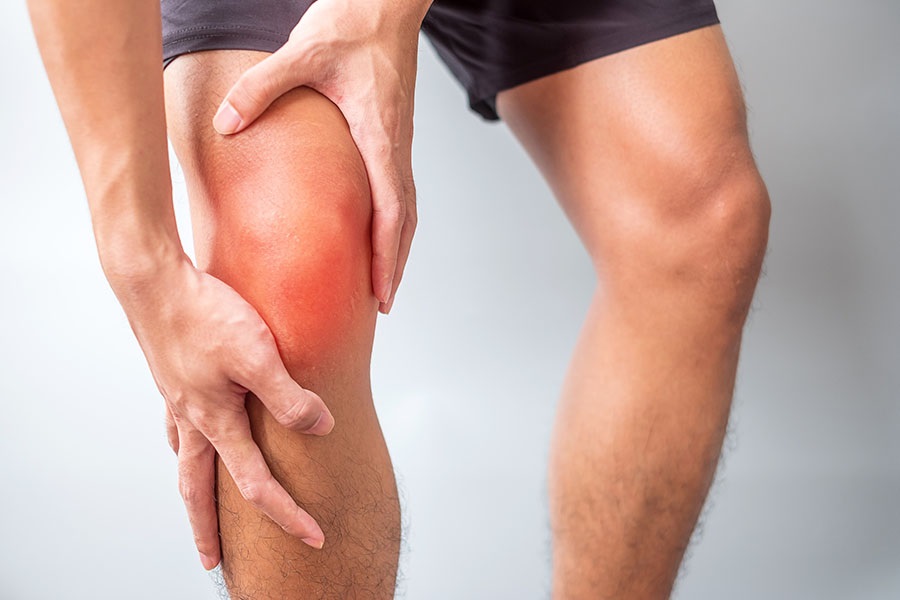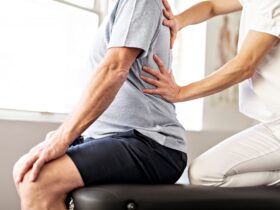Have you ever wondered if humans do not have limbs? It can be catastrophic as many things in life could not be done in a swift and timely manner. The limb is more than just bone, muscle, nerve and blood supply. The supported structure such as tendon and ligament enable the many movements of the limbs and to hold limbs in place. In this DoctorOnCall’s article, we will learn more about tendonitis.
To understand what tendinitis is, it is best to know a bit more on the tendon itself first. Tendons are strong, tough, elastic yet non-flexible connective tissues. It connects the muscle to bones. Each muscle will have one tendon. Tendon contains a bundle of compact fibres of fibroblast in a continuous row of parallel bundles. Tendons are often associated with ligaments as both are known as supporting structures of the limbs. However, ligament is more flexible and elastic compared to tendon. Ligament also connects bones to bones with each joint containing many ligaments.
Tendonitis is the inflammation of the tendon. In most cases of tendonitis, it is not known the exact cause for tendonitis but it usually occurs either because of the overuse or overload reasons. Overuse happens when the body motion is repetitive and overload happens when certain activity is increased too quickly such as weightlifting. Other causes include joint diseases such as rheumatoid arthritis can cause inflammation to the tendon. It is rare for tendonitis to be caused by infection.
Tendonitis can occur suddenly which is acute or chronic which occurs gradually. Acute tendonitis typically occurs after an injury. Chronic tendonitis is a result of overuse or repeated movements. Tendonitis can occur in any tendon. Commonly affected areas are the thumb, wrist, elbow, shoulder, knee and heel. Below are the common types of tendonitis:
- Achilles tendonitis- overuse of tendon connecting calf muscle to the heel bone
- Peroneal tendonitis- injury or repetitive overuse of the foot
- Patellar tendonitis- also known as jumper’s knee
- Posterior tibial tendonitis- affecting the tendon connecting back of the shinbone to the bone of foot
- Rotator cuff tendonitis- occur from repetitive lifting arm over head or shoulder kept on one position for long period
- Tennis elbow- overuse of the forearm and common in adult athletes who play racquet sport
- Golfer’s elbow- less common than tennis elbow and often caused by occupation such as construction work
- Wrist tendonitis- small tears from sudden or repetitive injury
The 4 symptoms of tendonitis in general are pain, swelling, tenderness and joint weakness. It is worth noting that symptoms of tendonitis will depend on the affected area where the tendonitis occurs. For example, in rotator cuff tendonitis, the pain is dull and aches which also radiates into the upper arm toward the chest. In Golfer’s elbow, pain is felt on the inner side of the elbow. If tendonitis is caused by infection such as gonorrhoea, other symptoms such as fever, rash and discharge from the vagina or penis can be expected.
Tendonitis is easily diagnosed by a doctor asking the patient’s history and physical examination. The affected area is examined to check for tendons and other possible structures affected. Imaging tests such as ultrasound and MRI scan can be helpful to get a closer look of the tendon but it is not a necessity.
The aim of the treatment is to alleviate symptoms. This means that treatment focuses on reducing the inflammation which is the reasons for the swelling, pain, tenderness and warmth symptoms of the affected area. Doctor may first recommend applying ice packs to the painful area for 20 minutes around 3 to 4 time a day. Doctor may also suggest patient to take pain relief medication to ease pain and swelling. Patient need to rest the area for few days or even weeks to allow tendon repaired on its own. In case of infection, antibiotic will be prescribed to eliminate the infection. Some cases may need temporary splinting, bracing or sling to help fasten healing process. For tendonitis caused by condition such as rheumatoid arthritis, improving the condition will reduce the inflammation and prevent future episode of tendonitis. Serious cases may require corticosteroid injection. Rehabilitation programs can benefit in improving joint mobility and to regain function, strength and motion of the affected tendon. Surgery is rarely needed and often only reserved when other treatments does not work or there is major tendon damage.
Also read – Dengue Prevention
In essence, tendonitis is inflammation of the tendon. This condition is often caused by overuse or overload on the joint. Tendonitis in most cases can be dealt with by medical treatment and rest. It is important to treat tendonitis as leaving it untreated can cause complications such as tendinosis (degenerated tendon due to long period of inflammation to the tendon), scarring, adhesion, contracture and even tendon rupture. The best way to avoid tendonitis is to take preventative measures such as warming up and cool down before and after exercising, using correct technique during sport or work and do strengthening muscle exercise. Investing in ergonomic equipment such as chairs and tables for work can help reduce strain.










